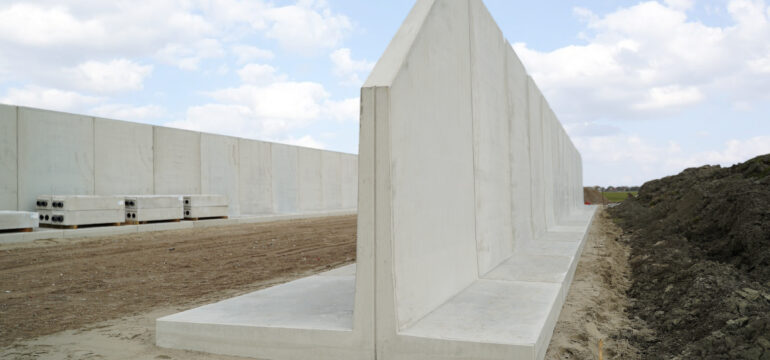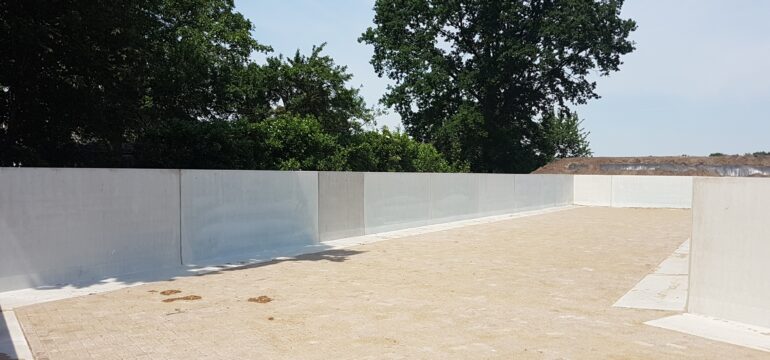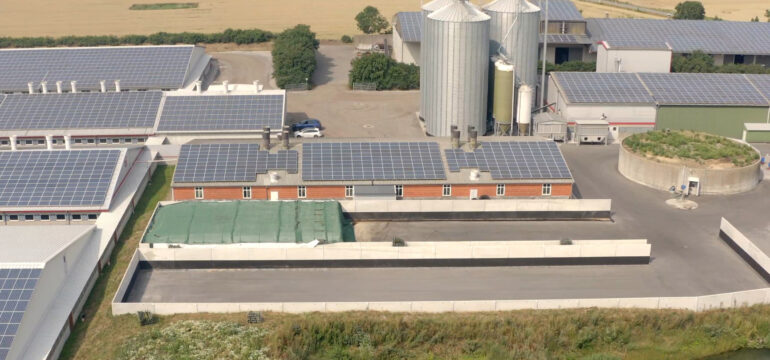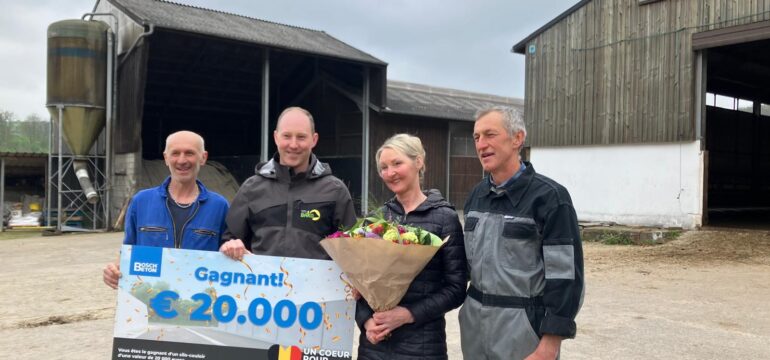
Climate change has consequences for maize yield
With another exceptionally long and hot summer behind us, climate change is becoming tangible, for instance in maize yield. Harvesting is increasingly difficult and is taking place earlier, while the ensilage process of once chopped maize demands more attention and a good silage clamp. Bosch Beton is monitoring developments closely and is ready to assist farmers with advice.
One of the consequences of climate change is the prolonged drought we experienced this summer, which has impacted wildlife, habitats and the environment. Carbon dioxide is always released during maize ensilage. However, nitrous gases are also released in particularly hot and dry summers, as happened in the maize silage in Wekerom with its emission of coloured gases.
Drought
In principle, maize does not need much water to grow. In the initial weeks of growth this is even good for the plants as its roots need to search deeper for water. The more developed the roots, the better the maize can cope with drought. But maize does need enough water when the plants flower and form cobs. Drought reduces the maize flowering period, resulting in insufficient fertilisation taking place, not enough cobs and low starch yields. Rainfall levels partly determine the end quality of maize yields, and these may reduce even further considering the current rate of climate change.
Innovation
Seed breeding and production companies are seeing cultivation areas change across the world. Climate change is forcing us to look for stronger varieties that can thrive better and withstand drought and other extremes. Seed breeding is, however, a long-term process that can take up to fifteen years.
Breeders are developing maize seed varieties that are more resistant to drought, such as Dente maize. Institutes including the Flemish Institute for Biotechnology (VIB) and Ghent University are conducting more detailed research into whether breeding techniques can be used to modify maize to enable the plant to better withstand drought. For example, scientists are investigating whether – despite the difference in climates and soil types – certain genetic African crop characteristics can be transferred to other crops.
Ensilage
It is important to ensile the chopped maize properly in a silage clamp containing as little green plant matter as possible. Too much plant matter in chopped maize stimulates gas formation. Should gas formation occur, Wageningen University & Research recommends discharging the gas via the sides of the silage. The maize can still be used as forage despite any gas formation.
Good silage clamp
The changing climate is making it more difficult and expensive to produce a good harvest. Good roughage is the basis for everything, with one of the results being improved milk production from your cow. A good silage clamp is vital to reduce loss and ensure that additional roughage does not need to be purchased. There are three main advantages to a high-quality silage clamp:
- Roughage loss reduction and a 5 – 10% saving on high feed costs per average dairy farm.
- Improved forage preservation through optimum compaction to the edge.
- Good roughage also results in higher and improved milk production.
Advice
Would you like advice on good silage clamps for maize storage? Feel free to contact our AGRA advisers for more information or non-binding advice.
Silage clamps for inspiration

Silage clamp created from retaining walls with extra-long heel for cover system
In Blessum in the Netherlands we created a silage clamp with our new retaining walls with extra long chop.

Silage clamp at unique angle
In Sprang Capelle, a farmer wanted to combine the space behind a stable with an entrance next to the stable. Our retaining walls created a unique silage clamp with an angle of 118 degrees

Five silage clamps for maize storage on Fehmarn island
Five silage clamps for maize storage at arable and pig farm on Fehmarn island in Germany.
NEWS

New: the Retaining Wall Configurator
Bosch Beton's Retaining Wall Configurator allows you to select a structurally sound retaining wall for your project in a few...
New: Green Series
“Innovation and sustainability are key in everything we do at Bosch Beton,” says Brechtje van den Beuken, co-CEO Bosch Beton....
